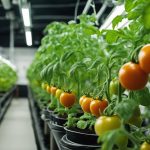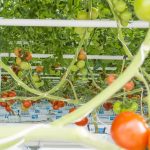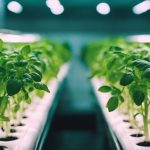Embarking on the journey of growing microgreens presents you with a fundamental choice. The soil vs hydroponic microgreens debate is a lively topic among indoor gardeners, each method offering distinct advantages and sparking curiosity about yield, taste, and nutritive value. Microgreens, the young seedlings of vegetables and herbs, have gained popularity due to their high nutrient density and versatility in culinary use.
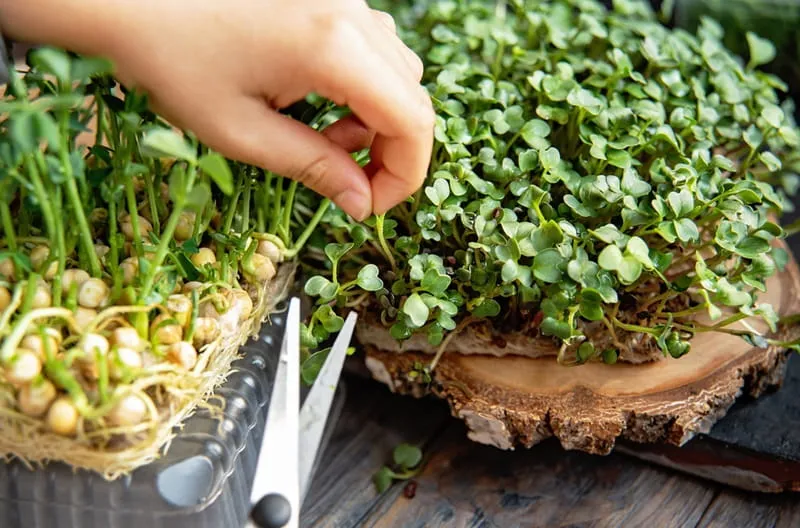
When you grow microgreens in soil, you’re leveraging the natural medium plants have been thriving in for millennia. Soil is adept at supporting the microgreens’ root systems and offering a steady supply of nutrients. It’s generally observed that soil-grown microgreens have a more pronounced flavor profile, shedding light on the influence that the growing medium has on the end product’s taste.
Conversely, choosing hydroponics means entering a world where soil is replaced with water enriched with mineral nutrient solutions. This system gives you precise control over the nutrient balance, which can lead to faster growth rates. Hydroponically grown microgreens are often noted for their cleaner, more uniform look and their milder taste, which can be preferable in certain culinary situations. As you weigh the pros and cons of each method, consider how factors like flavor intensity, growth speed, and your control over the growing environment align with your gardening goals.
Understanding Microgreens
In this section, you’ll learn precisely what microgreens are and uncover why they’ve become such favorites in kitchens and dining places around the world.
What Are Microgreens?
Microgreens are the young seedlings of edible vegetables and herbs harvested just after the first leaves, known as cotyledons, have fully developed. Unlike sprouts, microgreens are grown in a medium like soil or a hydroponic system and require sunlight for growth. They range in size from one to three inches and are revered for their nutritional density and the array of colors, textures, and flavors they bring to dishes.
Popularity in Restaurants and Homes
Microgreens have surged in popularity for several reasons. They pack a concentrated amount of vitamins, minerals, and antioxidants compared to mature plant leaves. These tiny greens offer a more intense flavor, which can enhance a variety of culinary creations, from salads to sandwiches.
This rising star status is not just limited to restaurant plates; home cooks are also embracing microgreens. They can be easily grown on kitchen windowsills, bringing fresh, gourmet ingredients right to your fingertips. Their aesthetic appeal and quick harvest times make them a rewarding addition for any food enthusiast looking to add a pop of color and a nutritional boost to their meals.
Basics of Soil-Based Growth
When growing microgreens, soil remains a traditional and effective medium. It’s essential for you to understand not only the benefits but also how to select and manage soil for optimal microgreen growth.
Benefits of Soil as Growing Medium
Soil is a reliable growing medium that provides microgreens with essential nutrients and supports robust root development. Your soil-grown microgreens can benefit from the complex ecosystem within the soil, which includes microorganisms that help in breaking down organic matter into nutrients. This process naturally enriches the soil, making additional fertilization sometimes unnecessary. Moreover, soil can act as a buffer for water and nutrients, holding onto these resources and releasing them to the plants as needed, reducing the frequency of watering.
Selecting the Right Soil
You’ll want to choose soil that is rich in organic matter for your microgreens. A mix that includes compost or manure can provide a balanced nutrient content, supporting your microgreens’ growth. Look for soil that is loose and has good drainage to prevent waterlogging, which can lead to root diseases. The soil should also be free of contaminants and weed seeds to give your microgreens the best chance of thriving without competition or harm.
Soil Management for Microgreens
Managing your soil effectively involves ensuring the right balance of moisture and aeration. Overwatering can lead to compaction and root rot, so be sure to water when the top layer of soil feels dry to the touch. Incorporating organic materials like compost into your soil can improve its structure and water-holding capacity. Fertilizers may be added if soil testing indicates a deficiency in specific nutrients, but with a well-maintained compost, additional fertilizers are often not necessary. Regularly check your microgreens for signs of nutrient deficiencies or pests, which can indicate that your soil needs attention.
Fundamentals of Hydroponic Microgreens Growth
Hydroponics is a soil-less growing method where you nourish your plants directly with a water-based, nutrient-rich solution. This technique allows for precise control over the pH levels and mineral content of the solution, leading to efficient and often accelerated plant growth. You can learn everything about hydroponics for microgreens here.
Benefits of Hydroponics Use
With hydroponic systems, the roots of microgreens have direct access to the nutrients they need, as they are dissolved in the water. This setup can lead to quicker growth rates compared to traditional soil-based methods. Here’s why you might find hydroponics particularly appealing:
- Efficient Nutrient Delivery: The nutrient solution is tailored to provide the exact minerals your microgreens require, which can be adjusted and monitored for optimum plant health.
- Optimized Water Use: Hydroponics helps conserve water since the system recirculates the water and nutrients, leading to less waste.
- Controlled pH Levels: You can maintain the ideal pH for your microgreens, which is crucial as the pH of the nutrient solution can directly affect plants’ ability to absorb nutrients.
- Space Maximization: Growing hydroponically often requires less space than soil-based methods, making it ideal for urban settings or small indoor areas.
- Reduced Pest and Disease Risk: Without soil, microgreens are less susceptible to soil-borne pests and diseases, potentially reducing the need for pesticides.
In addition to these advantages, there are various hydroponic methods you can explore, such as aeroponics, where roots are misted with the nutrient solution, and traditional reservoir-based hydroponics. Each method provides a unique way to manage the nutrient solution and ensure your microgreens are hydrated and nourished.
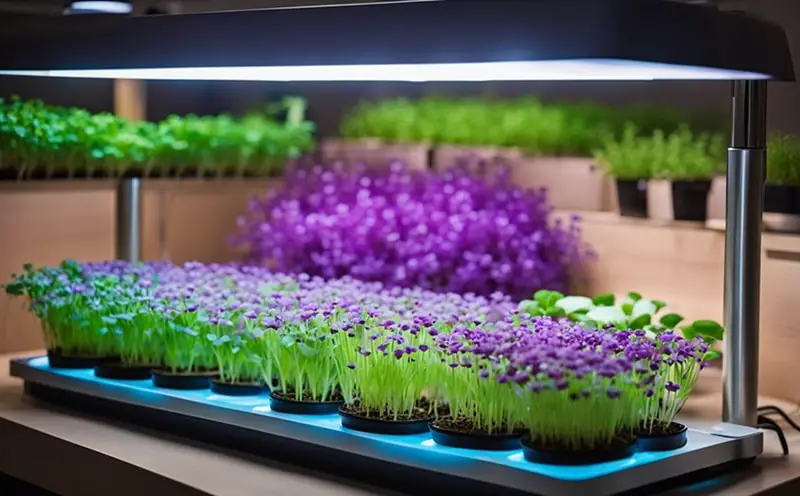
Do Hydroponic Microgreens Need Fertilizer
Hydroponic microgreens generally require some form of fertilizer because the water in hydroponic systems does not naturally contain the nutrients that plants need to grow. Unlike soil, which can provide a range of nutrients to plant roots, hydroponic solutions need to be supplemented with a balanced mix of minerals and nutrients to support plant health and development.
However, the fertilizer needs of microgreens are relatively minimal compared to more mature plants because they are harvested early in their growth cycle, often just after the cotyledons (the first set of leaves) have fully developed and before the true leaves emerge. During this short growth period, microgreens can often obtain sufficient nutrients from the seed itself, which stores a certain amount of energy and nutrients to support initial growth.
If you decide to use fertilizer for hydroponic microgreens, consider the following:
- Low Concentration: Use a milder solution than you would for mature plants to avoid overwhelming the delicate seedlings.
- Balanced Nutrient Solution: Look for a hydroponic fertilizer that provides a balanced range of macro and micronutrients, including nitrogen, phosphorus, potassium, calcium, magnesium, and trace elements.
- Liquid Form: A liquid hydroponic fertilizer will mix easily with water and can be applied directly to the growing medium or water reservoir.
- pH Balance: Ensure that the nutrient solution is pH-balanced to optimize nutrient uptake. Microgreens typically prefer a pH range of 5.5 to 6.5.
- Organic Options: There are organic fertilizers available that are suitable for hydroponic systems if you prefer to grow your microgreens organically.
When adding fertilizer to hydroponic microgreens, it’s important to follow the manufacturer’s instructions carefully and to monitor the plants for any signs of nutrient burn or deficiency. In many cases, growers find that a very light feeding or even just plain water is sufficient for a successful crop of microgreens.
Comparative Analysis
In exploring the pros and cons of soil versus hydroponic methods for growing microgreens, it’s important to consider critical factors such as growth rates, nutrient uptake, and flavor differences.
Soil Vs. Hydroponic Growth Rates
Your microgreens will likely grow faster hydroponically due to the constant and direct access to nutrients. Hydroponic microgreens can grow up to 50% quicker because a more concentrated nutrient solution is delivered right to their roots without the buffering effect of soil. However, growth rates also hinge on maintaining ideal conditions within either system, such as light, temperature, and humidity.
Nutrient Uptake and Plant Health
When it comes to nutrient uptake, hydroponics allows you to control precisely what and how much your microgreens get, which can lead to enhanced intake of essential vitamins and minerals such as iron, zinc, copper, and magnesium. Soil-grown microgreens draw natural nutrients from the earth and may benefit from its microbiome, potentially providing a different nutritional profile, which can include antioxidants and trace minerals naturally found in the soil.
Taste and Aesthetic Differences
You might notice that soil-grown microgreens often have a more robust flavor profile compared to those grown hydroponically. This is due to the various compounds in soil that contribute to taste. In contrast, hydroponic microgreens might have a milder flavor, yet they often appear cleaner and more uniform, as they’re not exposed to soil. This aesthetic appeal, alongside the delicate, often less earthy taste, can make hydroponic microgreens a preferred choice for certain culinary applications.
Practical Considerations
When setting up your microgreens operation, you need to consider how much space you have, how you’ll manage water and nutrients, and the maintenance required to keep your greens growing well.
Space and Infrastructure Requirements
Your choice between soil and hydroponic systems for growing microgreens will largely depend on the space you have available. Soil can be simpler to set up but may require more space due to the bulk of soil needed. On the other hand, hydroponic setups can be more complex, requiring a water circulation system, but they offer the benefit of stacking vertically to maximize your use of space. Both systems require a controlled environment to regulate temperature and light.
- Soil: Needs sufficient space for the trays and easy access for maintenance.
- Hydroponics: Requires space for the system, including trays, reservoirs, and possibly shelving for vertical farming.
Water and Nutrient Management
Water and nutrients are critical for the growth of microgreens, and how you manage these resources will differ between systems. Soil retains moisture and provides some nutrients naturally, while hydroponics requires consistent water quality and a precise nutrient mix.
- Soil: Less frequent watering, organic matter in soil provides some nutrients.
- Hydroponics: Regular monitoring of water quality and nutrient concentration necessary, often involves recycled water.
Maintenance and Monitoring
Maintenance is an ongoing requirement regardless of the growing method you choose. You need to monitor your microgreens closely to ensure they’re growing in optimal conditions. Soil requires tending to address any compaction and to maintain soil health, while hydroponics demands careful monitoring of the water system.
- Soil: Regular checks for soil moisture and quality.
- Hydroponics: Constant monitoring of the water source and system to prevent blockages and maintain the correct nutrient levels.
Challenges and Solutions
When growing microgreens, whether in soil or a hydroponic system, maintaining the health of your plants is crucial. You’ll need to be proactive about disease and pest management and take steps to prevent contamination and mold, which could otherwise compromise your crop.
Disease and Pest Management
Pests and diseases can be a significant problem when growing microgreens. In soil, critters like fungus gnats may be attracted to the organic matter, while excess moisture can lead to fungal diseases. For hydroponic systems, the constant moisture can be a haven for pests like aphids and also create an environment prone to waterborne diseases.
- For Soil:
- Regular Inspection: Check your microgreens daily for signs of pests or disease. Catching issues early can prevent largescale infestations.
- Natural Predators: Introducing beneficial insects can be a natural way to control pest populations.
- For Hydroponics:
- Water Treatment: Use a non-toxic water treatment solution to prevent pathogens.
- System Cleaning: Regularly clean your hydroponic system to avoid the buildup of algae and harmful bacteria.
Preventing Contamination and Mold
Contamination and mold pose a threat to microgreens, potentially ruining entire crops. These challenges can be exacerbated by poor air circulation or unsterilized equipment, whether it’s soil or nutrient film techniques you’re working with.
- Air Circulation: Ensure your growing area is well-ventilated to reduce humidity levels, discouraging mold growth.
- Sanitization Protocols:
- Soil: Use sterile soil and containers to minimize the risk of mold spores.
- Hydroponics: Sterilize your system and tools to prevent mold and contamination.
Sustainability and Environmental Impact
When you choose between hydroponics and soil for growing microgreens, understanding the sustainability and environmental impact of each method is critical. Your choice can conserve water, reduce waste, and contribute to a sustainable cycle of growth.
Water Conservation in Hydroponics
Hydroponic systems are known for their efficient use of water. Since the water circulates within the system, you use significantly less than traditional soil farming. Here’s how it works:
- Closed-loop system: The same water is recycled and used multiple times, which leads to a reduction in overall water usage.
- Nutrient solution: Microgreens receive nutrients directly from a water-based nutrient solution, minimizing run-off and water waste.
Soil Sustainability and Composting
Growing microgreens in soil can contribute to a sustainable environment through composting and soil health practices:
- Soil health: Using organic matter and proper crop rotations enriches the soil, promoting a sustainable growth environment for microgreens.
- Composting: Leftover organic material from microgreen cultivation can be composted, reducing waste and contributing to the nutrient content of the soil for future planting.
Choosing Between Soil and Hydroponic Microgreens
When deciding on growing microgreens, you’re looking at two primary methods: soil or hydroponics. Each comes with its own set of benefits and considerations that are crucial for both home gardeners and commercial producers.
Considerations for Home Growers
As a home grower, your choice between soil and hydroponics may hinge on available resources and your personal investment in the gardening process.
Soil-Based Microgreens:
- Pros: They tend to offer a more robust flavor, can use recycled materials as growing medium, and are often more forgiving to the occasional neglect.
- Cons: Requires more space and can be messier than hydroponic systems. There’s also a higher risk of pests and diseases.
Hydroponic Microgreens:
- Pros: Faster growth rates and potentially higher yields can be achieved due to controlled nutrient delivery. A clean and compact system suitable for small spaces.
- Cons: Long-term could be more cost-effective, but you’ll need to invest in a setup and nutrients.
Commercial Production Decisions
For restaurant owners or commercial growers, the choice may reflect in the cost-effectiveness and the ability to supply consistent quality and volume.
Soil-Based Microgreens:
- Pros: Often lower startup costs compared to hydroponic systems.
- Cons: Manual labor can be higher, affecting cost-effectiveness over time. Soil systems can be harder to scale.
Hydroponic Microgreens:
- Pros: High degree of control over growing conditions, which can lead to consistent quality, important for restaurants that demand uniformity. Scalability is easier to manage, allowing for larger production volumes.
- Cons: Higher initial investment in hydroponic infrastructure and ongoing costs for nutrients and system maintenance.
In choosing the right method, weigh these pros and cons carefully against your priorities, whether it’s flavor, efficiency, or the scale of production.


